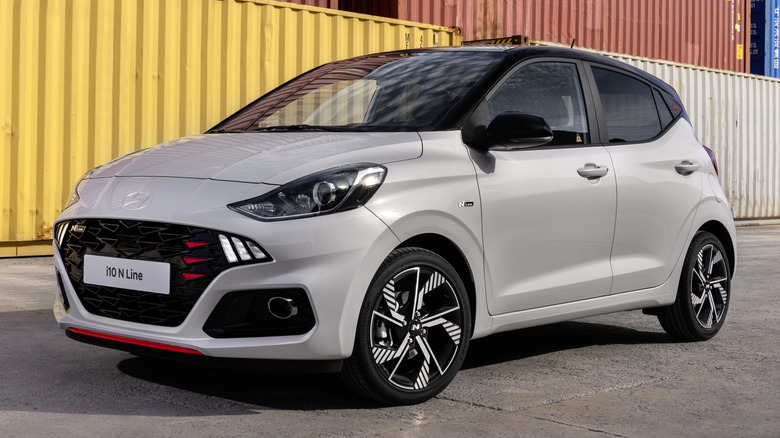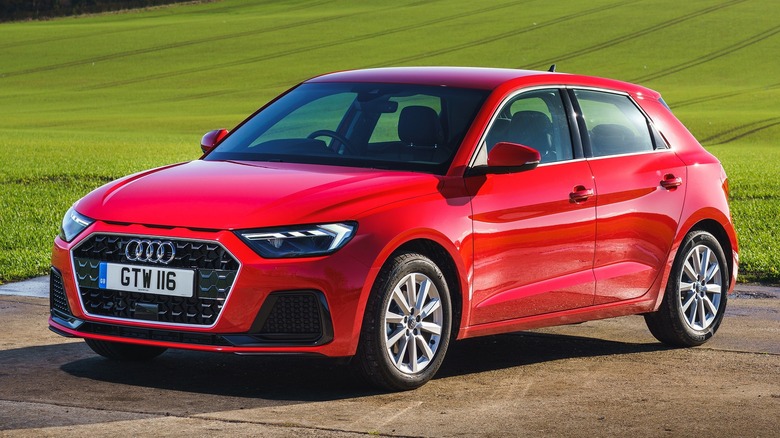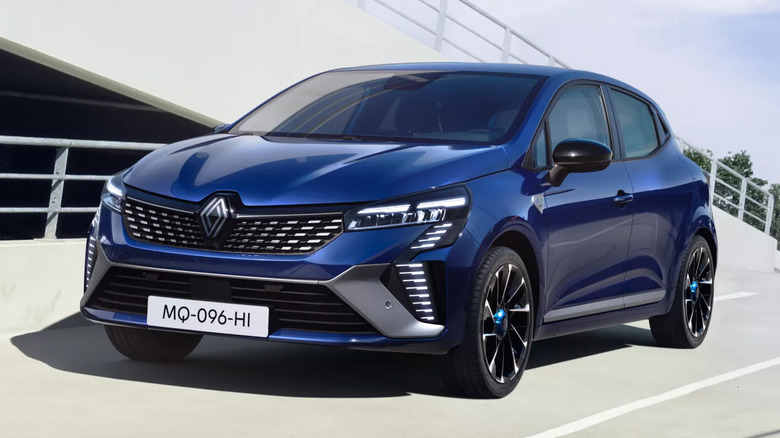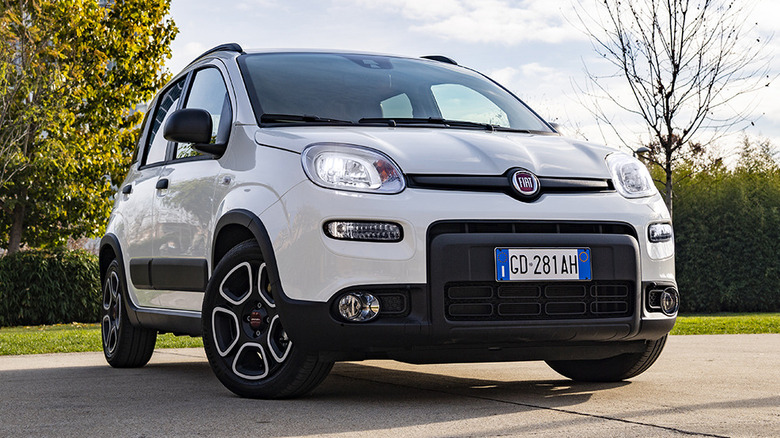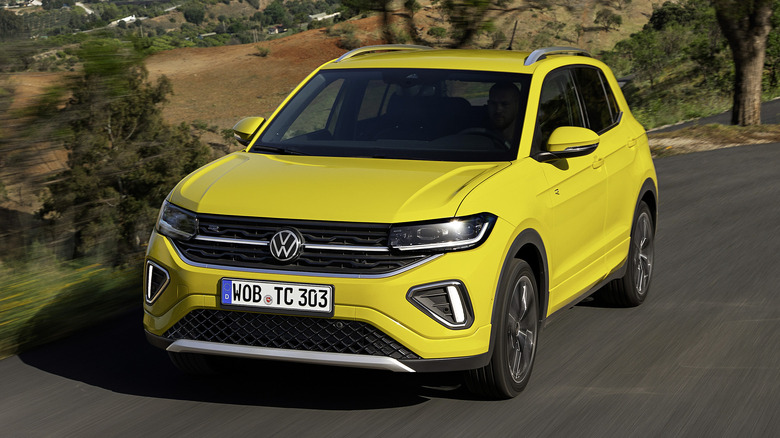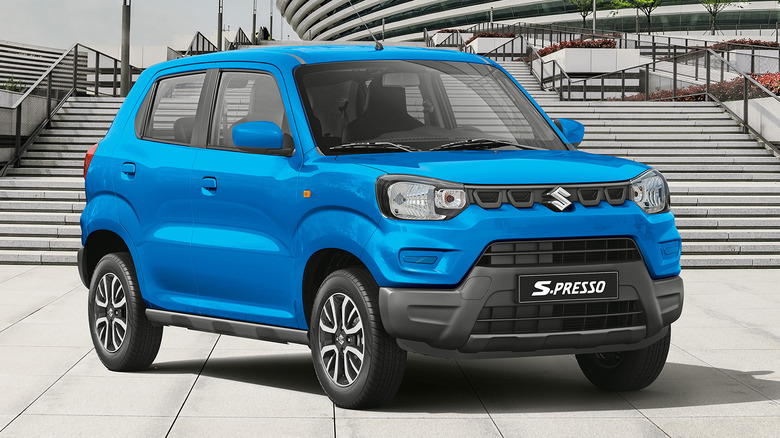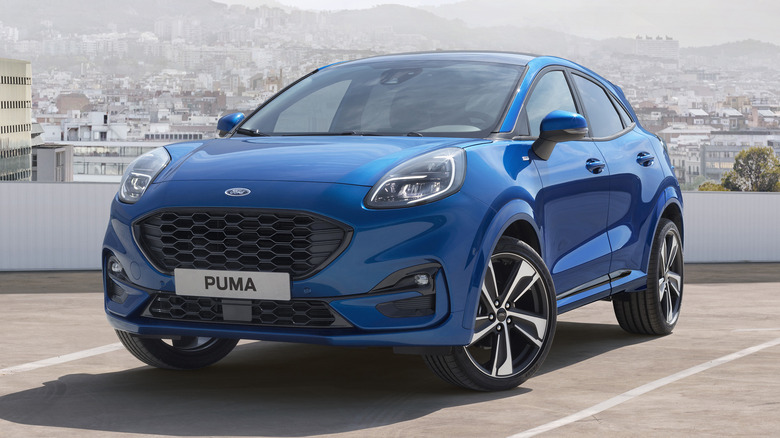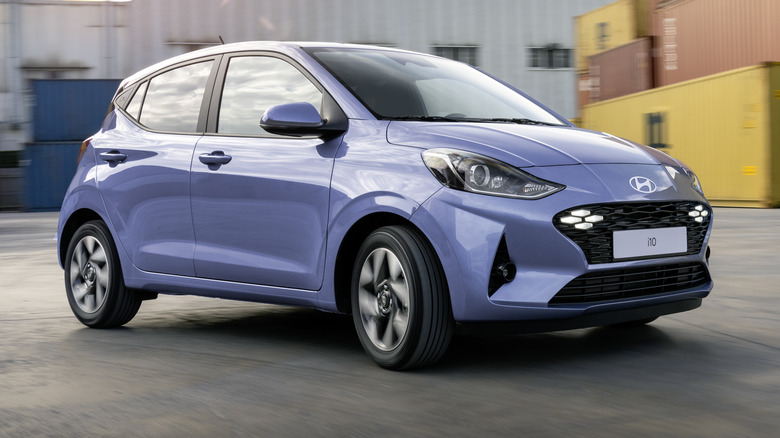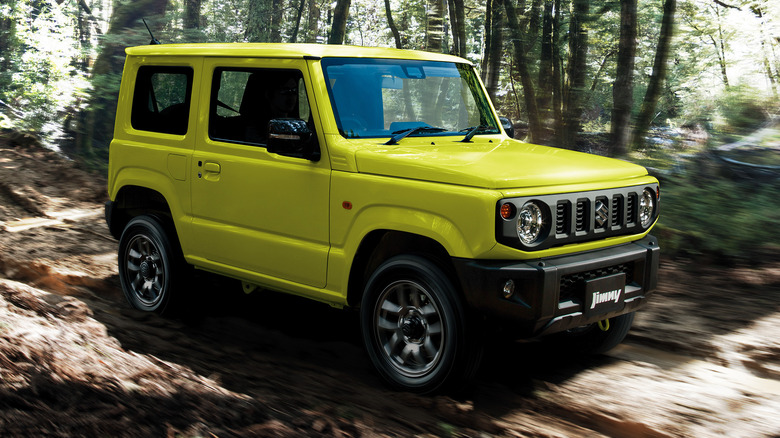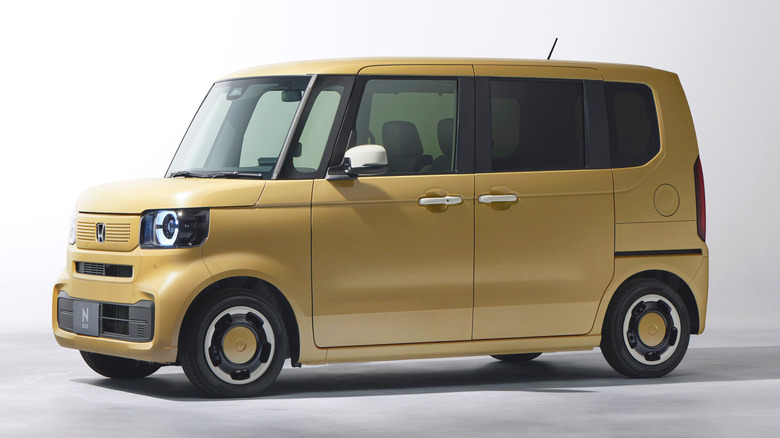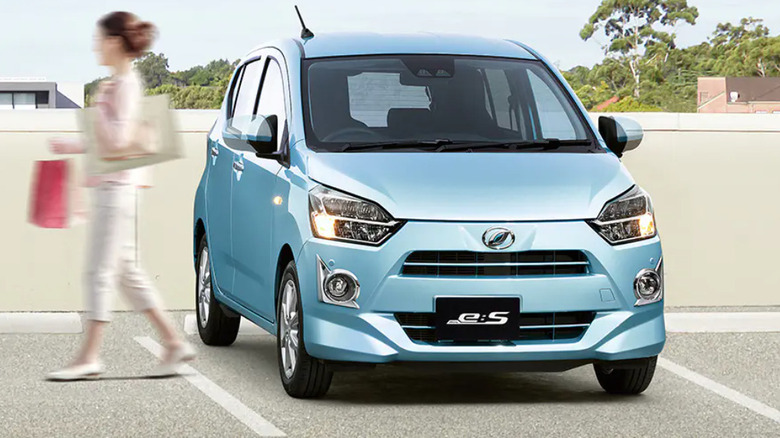10 Of The Lowest-Displacement Engines In Production Today
Contrary to the popular cliche, bigger doesn't always mean better. Cars with small engines have been popular with buyers in markets like Europe and Asia for decades, as they can be cheaper to run, emit less pollutants, and are often subject to favorable tax rules. However, they've never really caught on with American buyers in the same way, and as a result, most of the smallest car engines never make it stateside.
Virtually all of the current crop of pint-sized powertrains are designed for either the European or Japanese markets, with a surprisingly wide variety of manufacturers churning them out. In fact, almost every global automaking conglomerate offers an engine with a displacement of 1.0L or less somewhere in its global lineup. These small engines might be short on horsepower, but thanks to their affordable starting prices and low running costs, many remain popular with buyers today. These 10 are among the very smallest on the market as of this writing.
Audi 1.0L TFSI
Audi isn't the first brand that most enthusiasts will associate with small engines, but it has been producing its 1.0L turbocharged three-cylinder engine for years. It can be found in the brand's base-spec models for the European market, such as the Audi A1, a premium subcompact designed primarily as an urban runabout. In this model, it produces a modest 93 horsepower and takes almost 11 seconds to accelerate from 0 to 62 mph. The tradeoff for this lack of performance is efficiency — it officially achieves over 50 miles per gallon (mpg) in the U.K., which equates to around 42 mpg in the U.S.
The engine is also available in Audi's entry-level crossover, the Q2. Neither the A1 nor the Q2 are available in America, although that's hardly surprising. Brands often choose not to bring their smallest cars to the States due to limited demand and the high cost of meeting federal safety regulations. As a result, it's highly likely that Americans will never get to experience Audi's smallest production engine, except for any examples that eventually arrive under the 25-year import rule.
Renault 1.0L TCe 90
The 1.0L engine available in the current base-spec Renault CLIO hatchback can trace its lineage back to 2012, when the brand unveiled its first three-cylinder engine. Previous base-spec Renault engines were four-cylinder, and at the time, the brand claimed that several innovations made the switch possible. One of these was a low-inertia turbocharger, which offset any horsepower loss without denting the engine's efficiency, along with a variable displacement oil pump, another efficiency measure.
At launch, the engine's 90 horsepower was competitive with the brand's previous four-cylinder economy engines, but its emissions were notably lower. The current iteration of the engine hasn't gained any extra horses during its decade-plus in production, and with a combined rating of 54.3 mpg in the U.K. under the WLTP cycle (roughly 45 mpg in the U.S.), it's not officially any more efficient either. Still, it remains the most affordable powertrain in the CLIO range, starting at £18,395 in the U.K. (around $23,900) for the 2025 model year.
Fiat 1.0L GSE
Stellantis, one of the automaking conglomerates that owns many of the top car brands in the world, including Fiat, isn't doing well. In July 2024, the company's CEO stated that it might be necessary to ax some of its brands to ensure the carmaker remains profitable in the long term, leading to inevitable speculation about which brands might be heading for the chop. Fiat is unlikely to be one of them, but its cars are now suffering a sales slump in Europe and weak demand in overseas markets. As a result, production of multiple key models in the brand's lineup has been temporarily paused.
This has led to an unusual situation for the brand's 1.0L GSE engine, which is currently found under the hood of the long-running Fiat Panda. Stellantis had originally planned to phase out its combustion engines in favor of electric powertrains, and had already axed the mild hybrid 1.0L GSE powertrain option for its famous 500 city car.
However, with demand for the EV versions so low, the brand has reversed course and is now planning to reinstate a hybrid option for the 500, as well as keep its hybrid Panda for the foreseeable future. As a result, this tiny three-cylinder engine is now vital to the future of Fiat's small car lineup, despite being considered near the end of its life just a couple years ago.
VW 1.0L TSI
In a 2020 press release, VW described its TSI engine as "THE [gasoline] engine at Volkswagen" due to its importance in the brand's global lineup. It's available in both 1.0L and 1.5L versions, with the smaller engine powering several models, including the T-Cross and the Polo. Neither model is available in the U.S., although American buyers do have access to the 1.5L TSI in the base-spec Jetta sedan.
The larger engine produces around 150 horsepower, while the smaller 1.0L unit makes approximately 90 horsepower. The exact figure varies between models. The engine can trace its lineage back to the 2012 launch of the EA 211 lineup, which underwent a major overhaul between 2016 and 2019. The changes were aimed at improving efficiency — something particularly important for VW given the outcry caused by the Dieselgate scandal. VW was keen to show the buying public that its new, improved engines were actually more efficient this time around, and these improved engines remain a staple in its lineup today.
Suzuki 1.0L K10C
While some brands design their smallest engines with European tastes in mind, others focus on major Asian markets, particularly in Japan and India. Japan's affordable 0.66L Kei cars are well-known among car enthusiasts worldwide, but models targeted at the Indian market tend to get less global recognition. Suzuki designs specific models for both of these markets, with one of its India-specific models being the S-Presso. Under its hood sits a 1.0L K10 engine, the smallest member of the brand's K-Series engine family.
Like most small car engines, it's designed to be as efficient as possible, while remaining inexpensive to manufacture. The S-Presso starts at the equivalent of just over $5,000 in India, making it vastly cheaper than any Euro-oriented car. Its output of around 66 horsepower also lags behind most of its European competitors, although a turbocharged version with 99 horsepower is also available further up the lineup.
Ford 1.0L EcoBoost
In a 2023 ranking of every EcoBoost engine, SlashGear placed Ford's smallest unit in a lowly seventh place. Our verdict was that, despite the engine's innovative construction and impressive power output for its size, reliability problems with early units took the shine off its appeal. Modern examples of the 1.0L EcoBoost are not expected to suffer from the same teething troubles, although it's not offered in the current American lineup. In Europe, however, it remains available as part of a hybrid powertrain in the Puma crossover.
According to Ford, the 1.0L hybrid Puma achieves 52.3 mpg in the U.K., which is roughly 43.6 mpg in the U.S. That's a competitive figure but hardly exceptional, as non-hybrid engines of the same displacement from the likes of Renault and Audi are just as frugal. It might no longer be quite as economical as some rivals, but the EcoBoost impressed critics at launch, winning the International Engine of the Year award three consecutive times between 2012 and 2014.
Hyundai 1.0L MPi
The smallest and cheapest Hyundai available in the U.S. is currently the Venue crossover, which features a 1.6L four-cylinder engine making 121 horsepower. However, across the pond, a much smaller engine is offered: A 1.0L unit making just 62 horsepower can be found in the base-spec i10 city car. According to Hyundai, the i10 is a "car that is built in Europe for European customers" — in other words, it's too small and low-powered to be useful outside the continent's crowded towns and cities.
For buyers who don't need any additional power, the i10 makes both an efficient and affordable choice. The engine achieves an official combined rating of 55.3 mpg in the U.K. (46 mpg in the U.S.), no small feat for any non-hybrid gas-powered car. However, Hyundai is well aware that many buyers wouldn't be able to look past the base-spec car's measly horsepower figures, so it also offers a turbocharged N-Line variant of the 1.0L i10 with a slightly less sluggish 99 horsepower.
Suzuki 0.66L R06A
While cars designed for most global markets don't feature engines much smaller than a liter in displacement, those designed for the Japanese market are an anomaly. This is due to Japan's Kei car classification, which was created to make cars more affordable for Japanese buyers in the post-war years. Kei cars have to fit within certain size regulations and were originally much cheaper to run than larger cars, thanks to favorable tax and insurance rates.
The difference in running costs between Kei cars and larger cars is no longer as large as it once was, but they remain popular in Japan nonetheless. Kei cars must have engines no larger than 0.66L, and as a result, the makers of the world's smallest car engines in production today are all Japanese. Suzuki is one such engine maker, with its 0.66L R06A engine available in popular models like the Kei Jimny. A larger, export-oriented Jimny model is also produced with a 1.5L engine, but the Kei Jimny remains exclusive to Japan. Alongside its miniature off-roader, Suzuki also currently produces a range of other Kei models, including the Every Wagon, the Alto, and the retro-styled Lapin LC.
Honda 0.66L
Honda is another prominent Kei car manufacturer, with its current range including the N-VAN, N-BOX, and N-ONE. Its 0.66L DOHC engine is produced in both naturally aspirated and turbocharged form, although thanks to Kei regulations, neither produces more than the government-mandated 64 horsepower. Honda also offers both front-wheel drive and four-wheel drive on certain Kei cars to help them cope with the snowy conditions that are common through the winter in northern Japan.
Honda's Kei range doesn't just include gas-powered cars — the electric N-VAN e: is also available, boasting an official range of around 150 miles. However, despite their rising popularity elsewhere in the world, EVs remain a niche segment in Japan, accounting for just 2.2% of new car sales in 2023. So, even though Honda has taken its first steps toward electrifying its Kei range, it's likely that its traditional 0.66L gas engine will continue to be a buyers' favorite for the foreseeable future.
Daihatsu 0.66L
Under the umbrella of Toyota Group, Daihatsu produces Kei cars for three brands. It markets half a dozen Kei models under its own brand and is also responsible for the Kei car lineups of Toyota and Subaru. Toyota recently announced plans to pivot Daihatsu's output to focus solely on "mini vehicles," meaning that its smallest car engine will play a big role in its future. Production of its cars was temporarily paused in the wake of a safety scandal in late 2023, but the automaker has since resumed making cars — and the tiny engines that power them.
Although it remains relatively unheard of outside of Japan and a handful of nearby Asian markets, Daihatsu is a big player in Japan's small car market, selling over 1 million cars per year. As such, it is one of the world's largest producers of sub-1.0L car engines, and even its recent scandal is unlikely to threaten that title.
